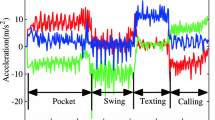Abstract
This study developed and implemented a new feature-based map-building model that uses only sparsely sampled sonar data from a fixed ring with 16 sonar sensors. It introduces two kinds of data filter approaches to overcome challenges associated with sonar sensors, such as a wide beam aperture and the specular reflection effect. The first approach is a footprint-association (FPA) model, which associates two sonar footprints into a hypothesized circle frame in order to determine the feature type, such as a line, a point, or an arc. The FPA model provides information about the trace of centers of hypothesized circles. It extracts features from a cluster composed of more than two independent footprints that originate from the same object. The other approach is a feature-association (FTA) model, which associates a new sonar footprint into extracted features to update the feature. Both proposed methods were tested in a home-like environment using a mobile robot.
Similar content being viewed by others
References
Cho, D.W., 1990, “Certainty Grid Representation for Robot Navigation by a Bayesian Method,”ROBOTICA, Vol. 8, pp. 159–165.
Crowley, J. L., 1985, “Navigation for an Intel-ligent Mobile Robot,”IEEE J. of Robotics and Automation, RA-1(1), pp. 31–41.
Elfes, A. and Moravec, H. P., 1985, “High Resolution Maps From Wide Angel Sonar,”IEEE Intl. Conf. on Robotics and Automation, pp. 116–121.
Kleeman, L., 1999, “Fast and Accurate Sonar Trackers Using Double Pulse Coding,”IEEE/ RSJ International Conference on Intelligent Robots and Systems, pp. 1185–1190.
Lee, K. H. Kim, S. H. and Kwak, Y. K., 2005, “Mobility Improvement of an Internet-Based Robot System Using the Position Prediction Simulator,”Intl. J. of Precision Engineering and Manufacturing, Vol. 6, No. 3, pp. 29–36.
Leonard, J. J., 1992, Direct Sonar Sensing for Mobile Robot Navigation,Kluwer Academic Publishers, Dordrecht, The Netherlands.
Lim, J. H. and Cho, D. W., 1994, “Specular Reflection Probability in the Certainty Grid Representation,”Trans. of the ASME, Vol. 116, pp. 512–520.
Lim, J. H. and Cho, D. W., 1996, “Multipath Bayesian Map Construction Model From Sonar Data,”ROBOTICA, Vol. 14, pp. 527–540.
Lim, J. H., 1994, “Map Construction, Exploration, and Position Estimation for an Autonomous Mobile Robot Using Sonar Sensors,”PhD dissertation, Pohang Institute of Science and Technology, Korea.
Nagatani, K., Lazar, N. A. and Choset, H., 1999, “The Arc-Transversal Median Algorithm: An Approach to Increasing Ultrasonic Sensor Accuracy,”IEEE Intl. Conf. on Robotics and Automation, pp. 644–651.
Thrun, S., Martin, C., Liu, Y., Hahnel, D., Montemerlo, R., Chakrabarti, D. and Burgard, W., 2004, “A Real-Time Expectation-Maximization Algorithm for Acquiring Multiplanar Maps of Indoor Environments with Mobile Robots,”IEEE Trans. on Robots and Automation, Vol. 20, pp. 433–442.
Wijk, O. and Christensen, H. I., 2000, “Triangulation-Based Fusion of Sonar Data with Application in Robot Pose Tracking,”IEEE Trans. on Robotics and Automation, Vol. 16, No. 6, pp. 740–752.
Author information
Authors and Affiliations
Corresponding author
Rights and permissions
About this article
Cite this article
Lee, SJ., Lim, JH. & Cho, DW. Feature-based map building using sparse sonar data in a home-like environment. J Mech Sci Technol 21, 74–82 (2007). https://doi.org/10.1007/BF03161713
Received:
Revised:
Issue Date:
DOI: https://doi.org/10.1007/BF03161713




